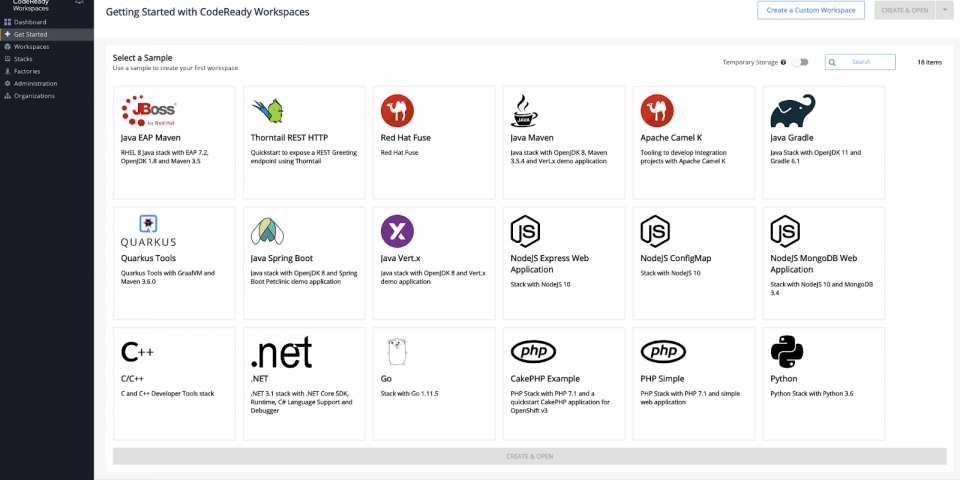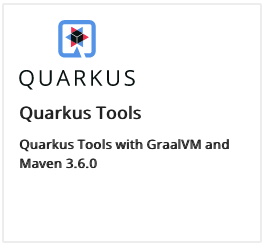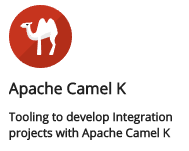We are pleased to announce the release of Red Hat CodeReady Workspaces 2.1. Based on Eclipse Che, its upstream project, CodeReady Workspaces is a Red Hat OpenShift-native developer environment enabling developer teams for cloud-native development.
CodeReady Workspaces 2.1 is available now on OpenShift 3.11 and OpenShift 4.3+.
This new version introduces:
- Dashboard: A new onboarding flow.
- Quarkus: A new workspace gets you started with Quarkus.
- Languages: The addition of .NET Core 3.1, Java 11, and Camel DSL (Apache Camel K).
- Other: Editor and AirGap improvements.
Last, but not least, CodeReady Workspaces 2.1 now always uses secure communications with HTTPS.
New onboarding flow
CodeReady Workspaces 2.1 provides a new onboarding flow from its dashboard, as shown in Figure 1. This page appears by default when there is no workspace.
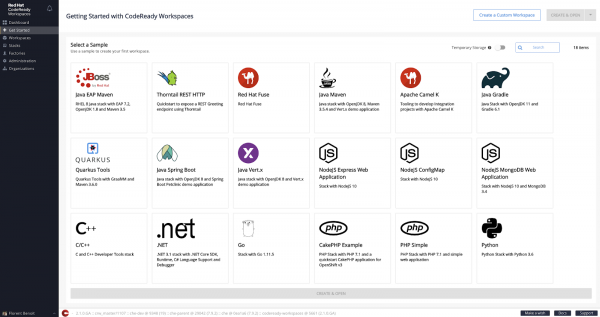
The getting started page allows you to create a new workspace quickly, offering a single button to create the workspace without anything to configure. For example, there are no devfiles or options, making this the smoothest and easiest onboarding process for users. The new icons, titles, and descriptions also help you to identify the technology at a glance.
Overall workspace creation
The dashboard now proposes options to enable/disable temporary storage and displays the Kubernetes namespace used when creating a workspace, as shown in Figure 2.
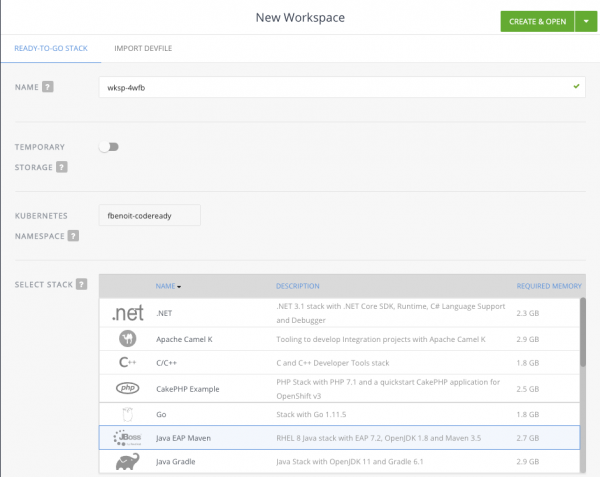
Quarkus workspace creation
You can now create a Quarkus workspace from the getting started page. By default, this step provides a create, read, update, and delete (CRUD) service. This workspace contains ready-to-use commands to start developer mode or debug the service. It’s then easy to see live updates when doing code changes.
This workspace also contains the Red Hat VS Code Quarkus plug-in to generate a new project, provide snippets, and so on as shown in Figures 3 and 4.


Language updates
CodeReady Workspaces 2.1 offers the following language updates.
.NET 3.1
This is a major update. The previous version of CodeReady Workspaces provided version 2.1.
Camel DSL (Apache Camel K)
Apache Camel K is a lightweight integration framework built from Apache Camel that runs natively on Kubernetes and is specifically designed for serverless and microservice architectures. Users of Camel K can now instantly run integration code written in Camel DSL on their preferred cloud platform, such as OpenShift.
Java: Java 11 and Gradle
Gradle support is now available as a build tool. Java workspaces can use Maven or Gradle when working on Java projects. Also, there is a new Java 11 plug-in in addition to the existing Java 8 plug-in. These two java versions have LTS support.
You can try Java 11 with a dedicated stack, including a user image based on Java 11. The java/javac tools are installed along with one container for IntelliSense using the Red Hat VS Code Java plug-in.
Air gap improvements
By using OpenShift 4.3, it is now possible to follow the restricted network setup to configure a CodeReady Workspaces Operator. CRW is also compatible with the OpenShift 4.2 restricted network setup, though this option involves more manual steps.
When Red Hat OpenShift Container Platform is installed on restricted networks, also known as a disconnected cluster, the Operator Lifecycle Manager (OLM) can no longer use the default OperatorHub sources because they require full Internet connectivity. Cluster administrators can now disable those default sources and create local mirrors so that OLM can install and manage Operators from the local sources instead.
Editor improvements
We have many improvements toward VS Code API compatibility. More plug-ins are now compliant with our internal editor based on top of Eclipse Theia. Also, there are many small enhancements; for example, the file tree, where empty space is reduced (Figures 5 and 6).

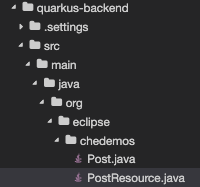
In addition, terminal tabs now show the container name, as shown in Figure 7.
And when you clone Git projects, there is no more prompt asking where to store the project to clone. The new default is in the /projects folder.
Try CodeReady Workspaces 2.1 now
CodeReady Workspaces 2.1 is available now on OpenShift 3.11 and OpenShift 4.x. To try it out:
- If you are using OpenShift 3.11, you can find Installation instructions here.
- If you are using OpenShift 4.x, you can install directly from OperatorHub. Follow the documentation here.
- Download the Red Hat CodeReady Workspaces CLI.
- Go to the Red Hat CodeReady Workspaces Product Page.
